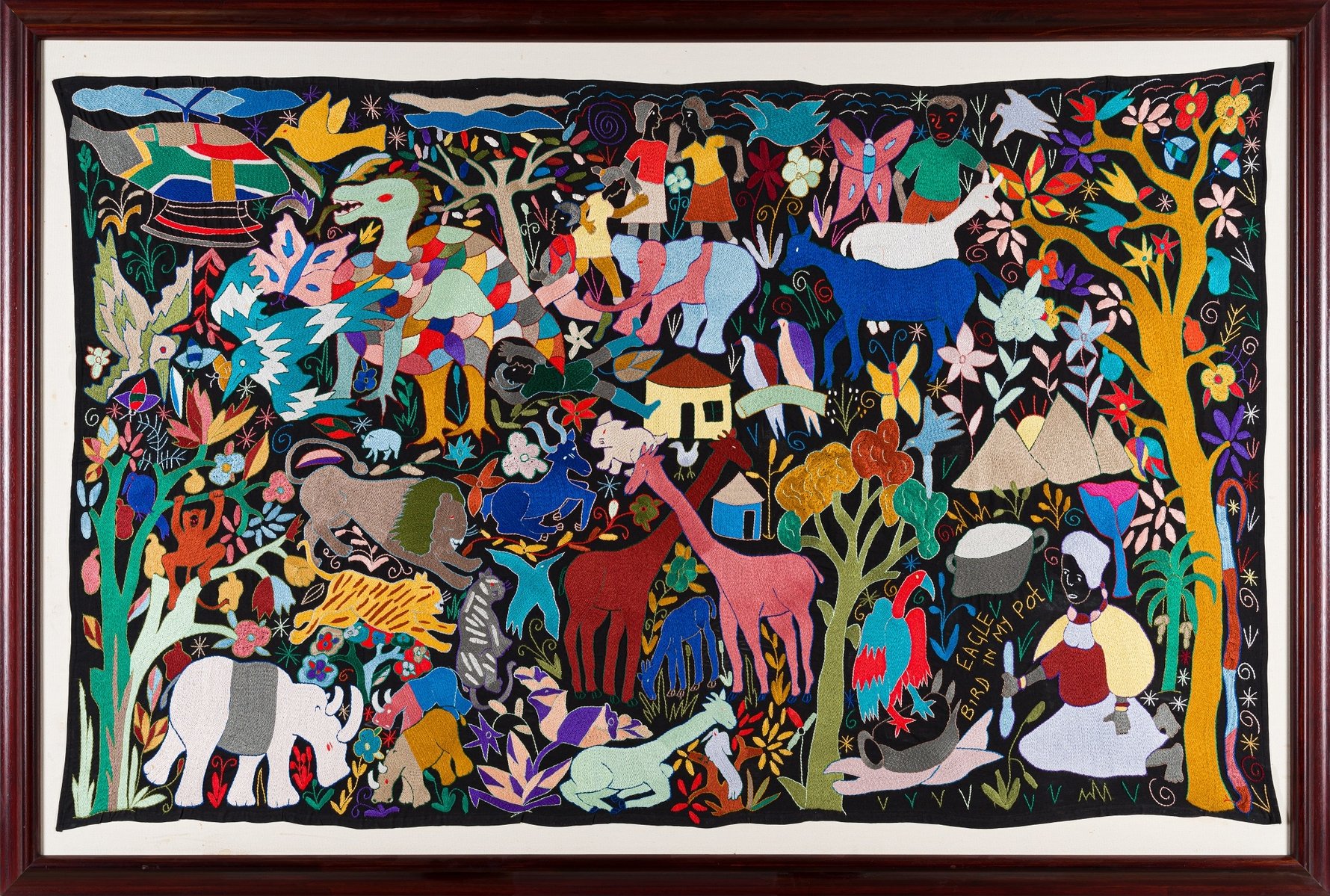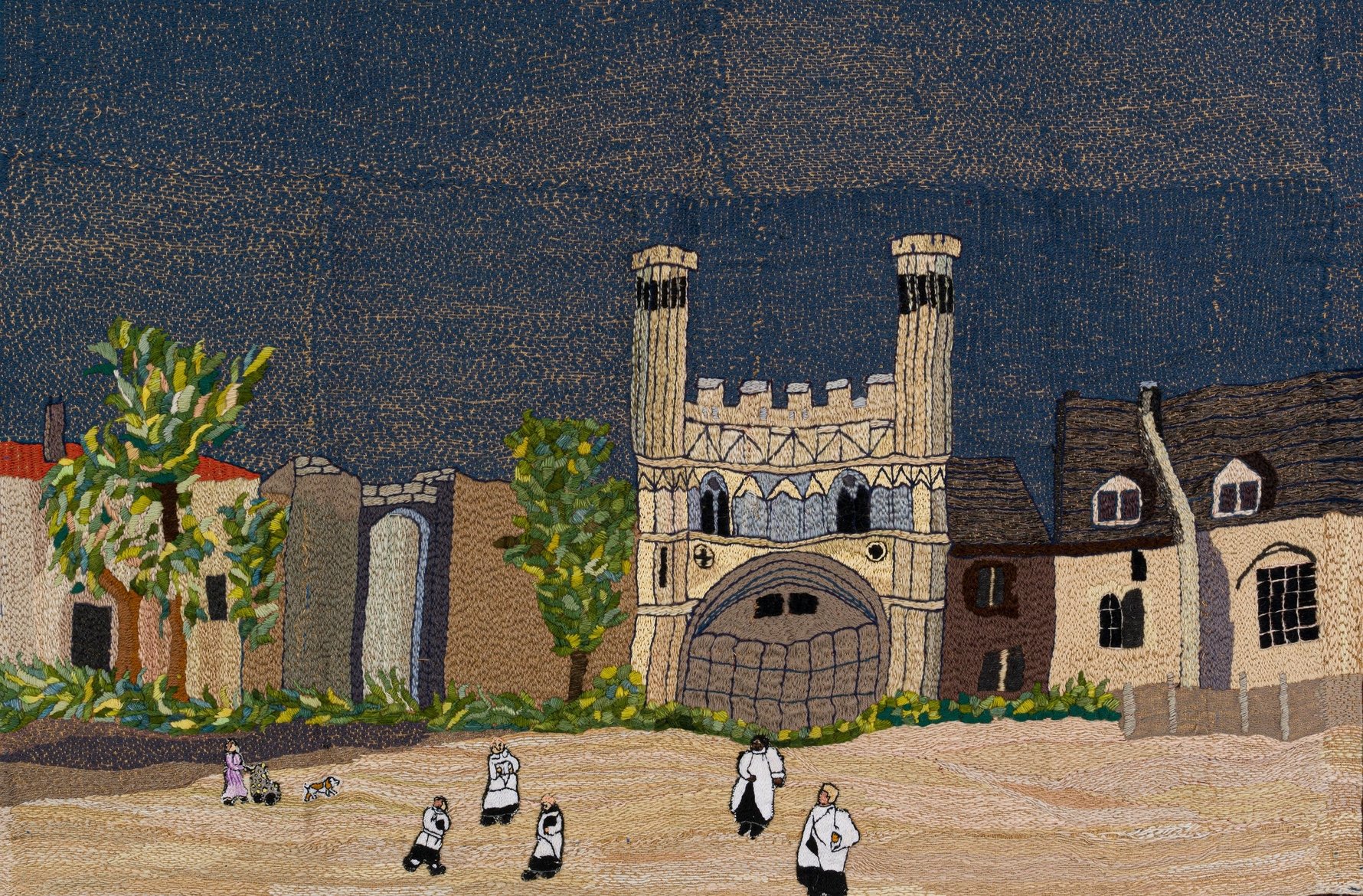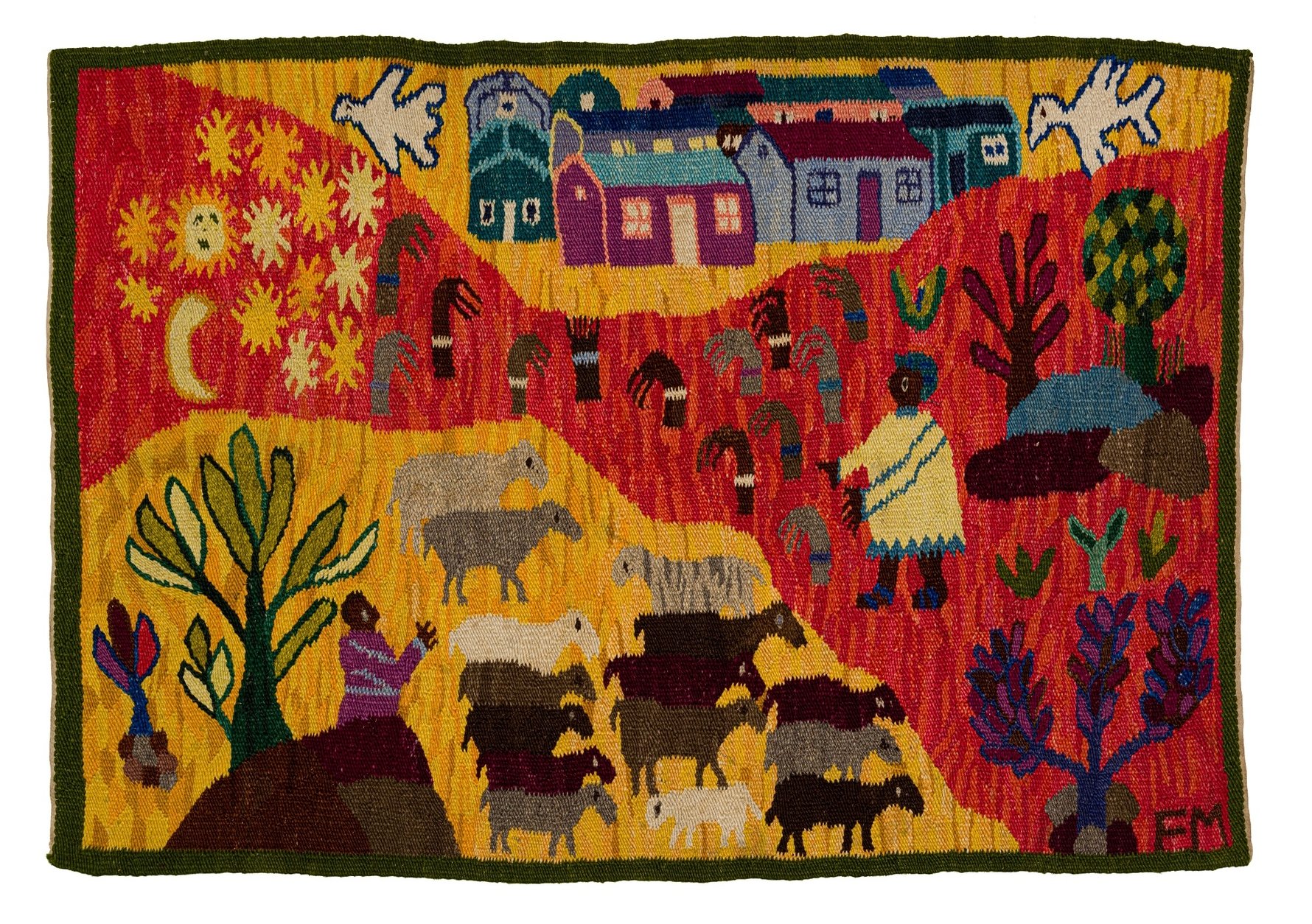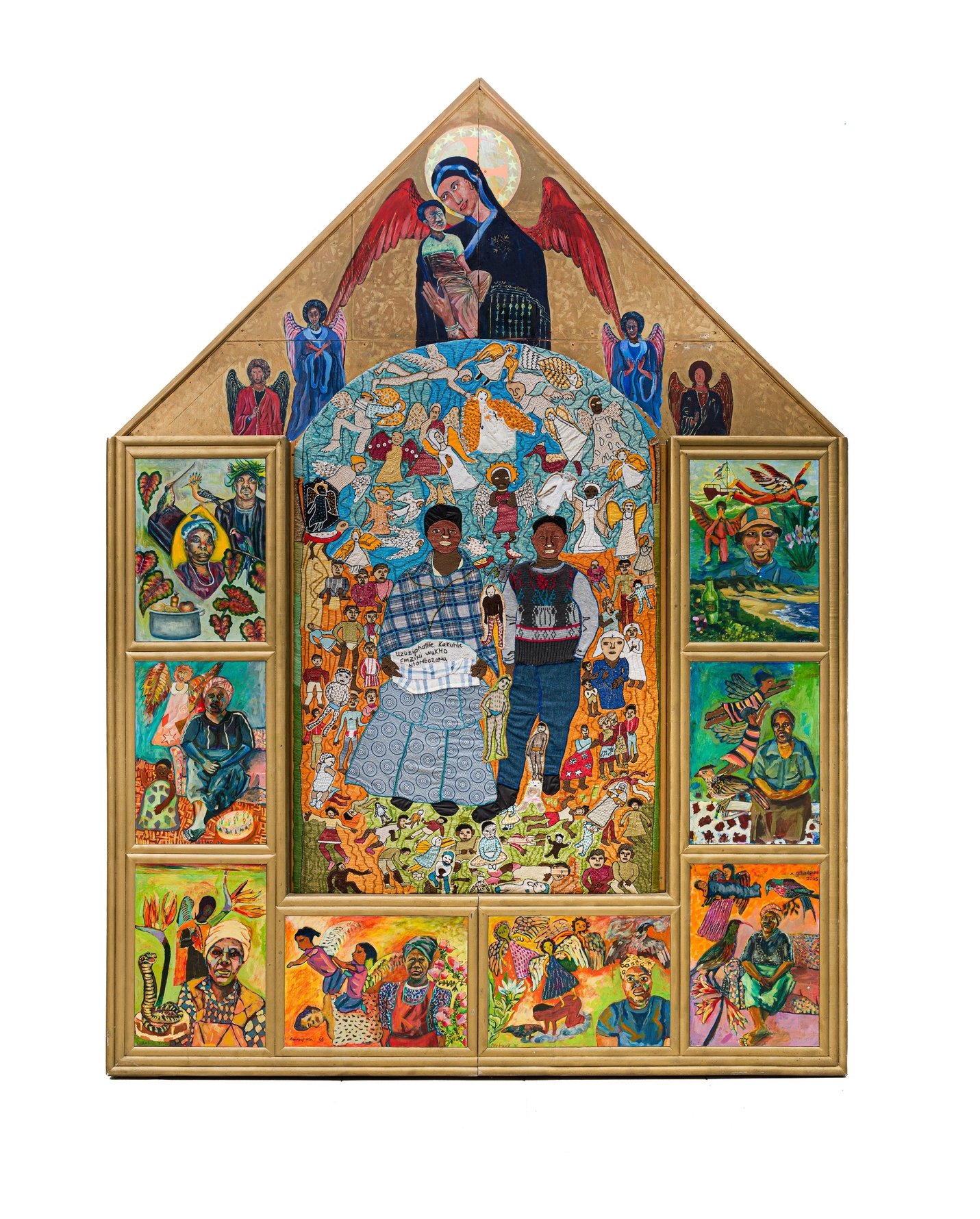It's super easy to get involved in the bidding online. Head to straussart.co.za to browse the impressive catalogue and register to bid on the 58 unique items under the hammer in this very special sale. The auction is open for bids until Wednesday June 1 and estimates for the smallest pieces start from just R2,000.

The Fabric of Society sale encompasses tapestries, embroidery, beaded fabric works, Kuba cloths from the present-day Democratic Republic of Congo and a wonderful array of other textile artworks created by individual contemporary artists as well as communities and collectives of talented textile workers and artists.

Among the most striking works in the sale is an extraordinary large-scale altarpiece created by the Keiskamma Art Project from the Eastern Cape. The work is titled The Marriage of Nolulama and Luthando and in eight side panels and one large central panel it tells the story of a young couple who were two of the earliest AIDS patients in the local community to receive antiretroviral (ARV) treatment. They met in the AIDS patients' treatment centre and subsequently married and this remarkable work of acyrlic paintings accompanied by appliqué and embroidery on cloth celebrates these young people going back to a normal life after regaining their health.

Also included in the sale are works by other prominent collectives known for their beautiful textile, tapestry and embroidery works including The Mapula Embroidery Project, based outside Pretoria and the famous ELC Art and Craft Centre at Rorke’s Drift, who are especially well known for their tapestry works.
Historic pieces that hold the rich traditions of specific regions also feature prominently in The Fabric of Society auction such as Kuba cloths (sometimes referred to as ‘cut-pile velvet’). Consisting of a base of plain-weave raffia cloth, they are produced by the men of the Bakuba community in present-day DRC, with distinctive geometric patterns cut and embroidered by the women of the community superimposed on top.
From The Natalie Knight Collection there are also fine examples of Tsonga and Shangaan cloth artworks and beadwork, ranging from n’wana (child figures) to sangoma skirts, all items imbued with cultural and spiritual significance as well as two historical Ndebele beaded and leather aprons.




